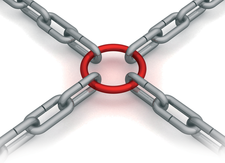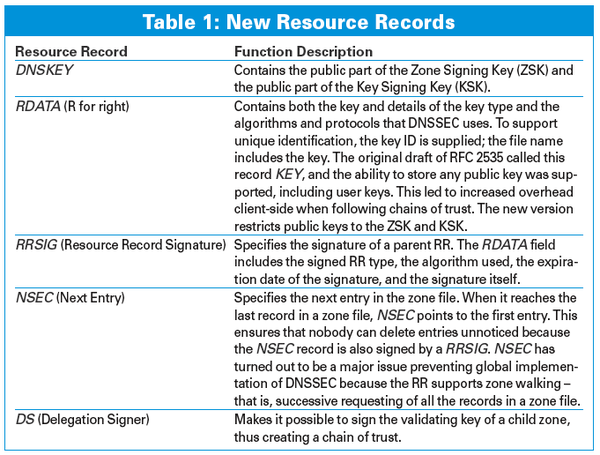Trusted name resolution with DNSSEC
Chain of Trust

© Sergey Ilin, Fotolia
Some Internet exploits target name resolution servers. DNSSEC uses cryptography to protect the name resolution service.
System administrators and security consultants have devised elaborate strategies for protecting computer networks, but one very basic part of the Internet infrastructure is still surprisingly vulnerable: the name resolution system. Intruders have developed sophisticated techniques for spoofing DNS responses. Of course, the white hats have fought back with their own defensive maneuvers, but experts agree that a fundamentally different approach is necessary. The DNS Security Extensions (DNSSEC) system [1] offers a comprehensive solution for authentication and data integrity for DNS.
DNSSEC adds cryptographic signatures to the legacy name resolution service. But a signature can't solve the problem alone (because an attacker can create a signature, too). DNSSEC also needs a method for authenticating the public key used in the asymmetric encryption, which means the system must provide its own form of Public Key Infrastructure (PKI).

[...]
Buy this article as PDF
(incl. VAT)
Buy Linux Magazine
Subscribe to our Linux Newsletters
Find Linux and Open Source Jobs
Subscribe to our ADMIN Newsletters
Support Our Work
Linux Magazine content is made possible with support from readers like you. Please consider contributing when you’ve found an article to be beneficial.

News
-
Linux Kernel 6.17 Drops bcachefs
After a clash over some late fixes and disagreements between bcachefs's lead developer and Linus Torvalds, bachefs is out.
-
ONLYOFFICE v9 Embraces AI
Like nearly all office suites on the market (except LibreOffice), ONLYOFFICE has decided to go the AI route.
-
Two Local Privilege Escalation Flaws Discovered in Linux
Qualys researchers have discovered two local privilege escalation vulnerabilities that allow hackers to gain root privileges on major Linux distributions.
-
New TUXEDO InfinityBook Pro Powered by AMD Ryzen AI 300
The TUXEDO InfinityBook Pro 14 Gen10 offers serious power that is ready for your business, development, or entertainment needs.
-
Danish Ministry of Digital Affairs Transitions to Linux
Another major organization has decided to kick Microsoft Windows and Office to the curb in favor of Linux.
-
Linux Mint 20 Reaches EOL
With Linux Mint 20 at its end of life, the time has arrived to upgrade to Linux Mint 22.
-
TuxCare Announces Support for AlmaLinux 9.2
Thanks to TuxCare, AlmaLinux 9.2 (and soon version 9.6) now enjoys years of ongoing patching and compliance.
-
Go-Based Botnet Attacking IoT Devices
Using an SSH credential brute-force attack, the Go-based PumaBot is exploiting IoT devices everywhere.
-
Plasma 6.5 Promises Better Memory Optimization
With the stable Plasma 6.4 on the horizon, KDE has a few new tricks up its sleeve for Plasma 6.5.
-
KaOS 2025.05 Officially Qt5 Free
If you're a fan of independent Linux distributions, the team behind KaOS is proud to announce the latest iteration that includes kernel 6.14 and KDE's Plasma 6.3.5.

